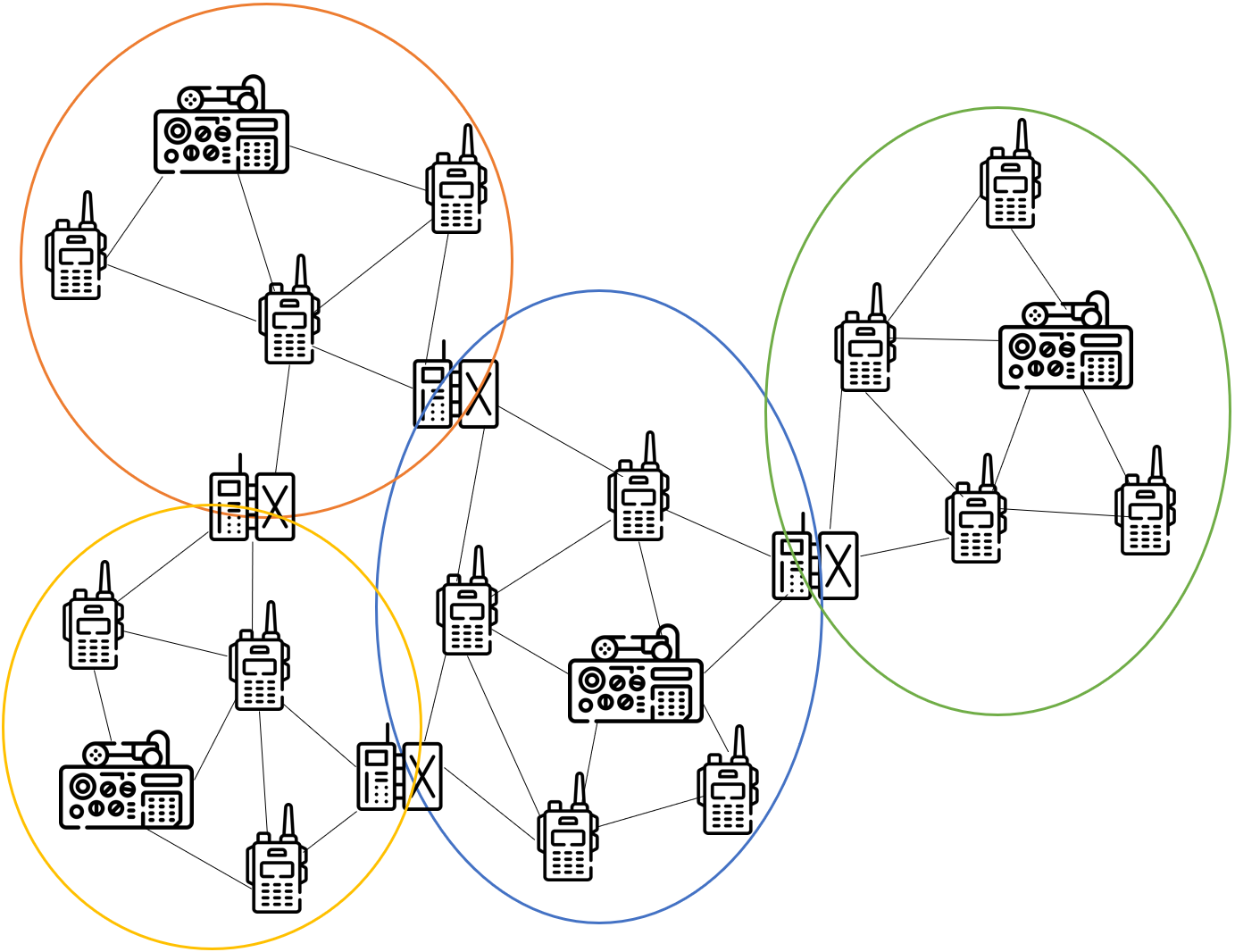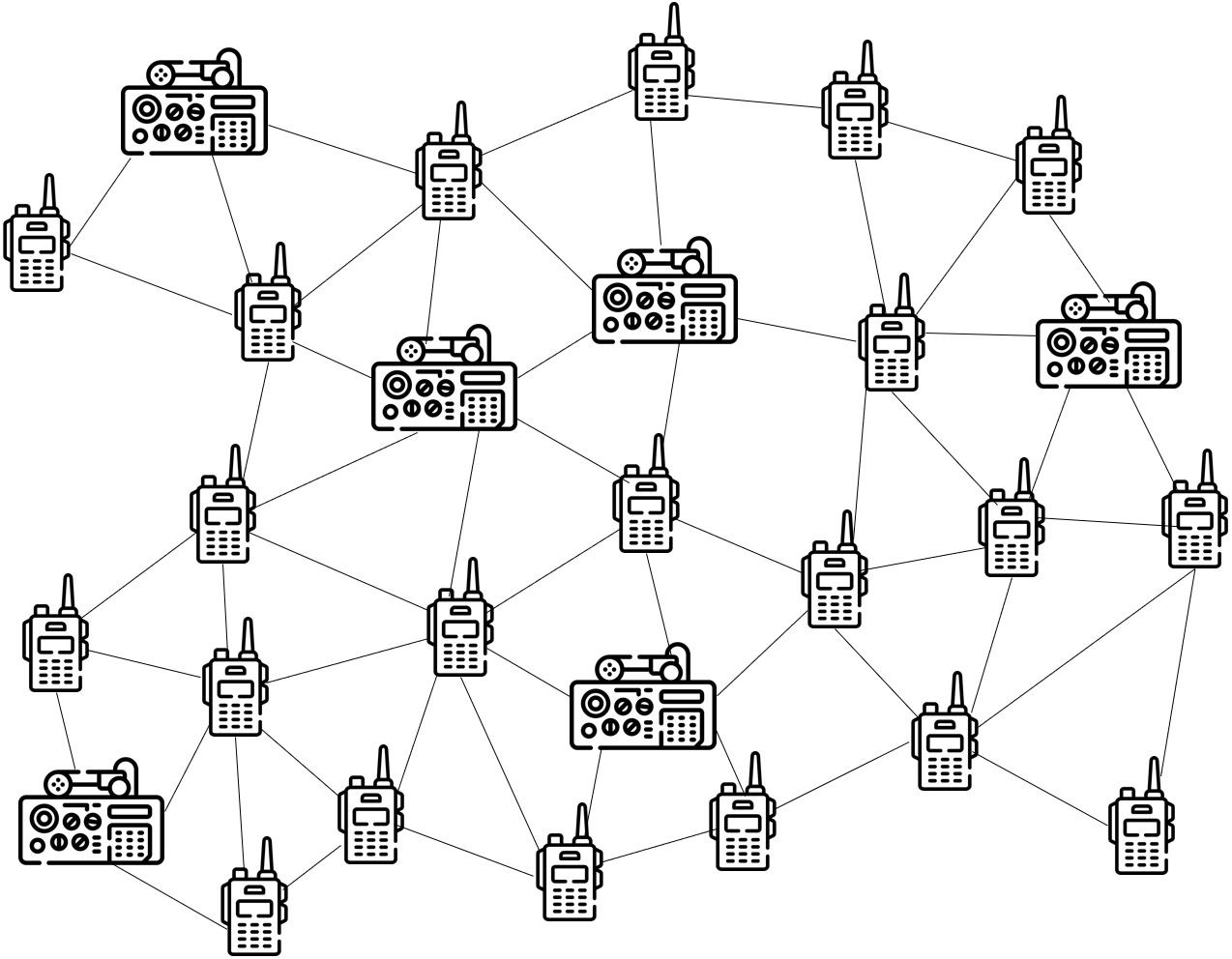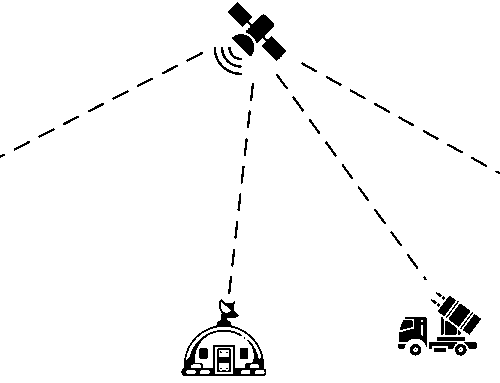Hierarchical Networking Waveform
The Hierarchical Networking Waveform (HADŞ) aims to establish a common communications infrastructure for a large number of units (over 1000) spread over a tactical area using a uniform waveform. This provides a much more dynamic, robust, and scalable solution, free from the issues faced by existing waveform solutions.
Problems Faced in Military Waveforms
In existing military waveforms, the number of units that can be accomodated by a single network is limited. Therefore, a large number of units need to be split into smaller networks which then need to be connected through special “network gateways.” The connected networks often use different waveforms, and even if they use the same waveform, different frequency sets are adopted to prevent radio interference. That brings along various problems.
When Having Different Waveforms or Frequency Sets Among Networks:
- A special conversion protocol is required for message transmission between different waveforms.
- Coordination of user/control messages and services expected to be common across all networks is necessary for different waveforms.
- As the number of connected networks increases, planning the frequency set and managing interference becomes challenging.
- Searching for networks within range without disconnecting a unit from its current network is difficult and inefficient.
- Due to mobility, units switch among networks, leading to service interruptions.
- Resources that remain unused in networks with low traffic cannot be utilized by other networks.
When Network Gateways are Required:
- Units that can communicate directly must do so through network gateways and transmitters because they lie in different networks.
- Even if multiple network gateways are used for network connectivity, the single point of failure situation cannot be completely avoided.
- Bottlenecks occur on network transition units due to topology and traffic.
- Special precautions for interference management are required on gateways, increasing both device size and cost.
Connecting Different Networks with Gateway Units
Advantages Provided by Hierarchical Networking Waveform
All problems listed under Problems Faced in Military Waveforms have been solved with HADŞ.
With HADŞ, a hybrid solution has been created by combining capabilities of “centralized” or “distributed” networks:
- All units are accomodated in a single network that shares the same frequency sources.
- Management of the network and resources is provided by cluster heads, which are determined dynamically and distributed globally by the waveform.
- Cluster heads centrally manage their members while working in a distributed manner among each other.
- Intra-cluster communication uses OFDMA, while in-cluster communication uses TDMA in a hybrid manner.
- Role transitions between cluster member and cluster head are managed by the waveform, independent of the equipment user.
- Units can be pre-assigned to certain network roles based on their location, hardware, battery, and other characteristics.
Gathering All Units in a Single Network
The design of HADŞ ensures:
- All user services provided by existing military waveforms are supported (Push-to-talk, point-to-point voice, video/file/message transfer, etc).
- The network is hierarchically organized and scalable.
- It has built-in repair mechanisms under mobility.
- Can adapt itself to link quality and active traffic.
- Does not rely on any GNSS.
- Can operate in a distributed manner.
- Possesses efficient channel access mechanisms within and between clusters.
To enable all these capabilities, various access control and network layer protocols have been developed. Each layer is designed and tested both independently and as a whole with other layers. The validation of these protocols, which can operate in a distributed or centralized manner, has been conducted through applications such as TSim and TMC. Validations have been performed in homogeneous and clustered networks with 50, 100, 200, 500, and 1000 units, involving various mobility, starting and traffic model scenarios.
The first version of the HADŞ design is scheduled for delivery to ASELSAN in January 2025. The physical layer of HADŞ has been developed by ASELSAN, while the upper layers have been developed and validated by ARKETEL under ASELSAN’s supervision and support.










